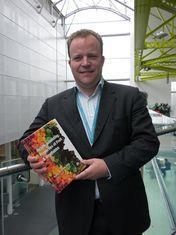
Much myth surrounds the supposed health-giving properties of fresh fruit and vegetables. A general consensus from health experts has confirmed that an increased dietary intake of specific bioactive compounds found in some fresh produce types - in other words, eating more of certain fruit and vegetables - may help prevent some cancers and chronic diseases.
But misinformation and other complexities make establishing robust health claims, at best, problematic. Take the European Food Safety Authority report, Scientific Opinion on the Substantiation of Health Claims Related to Fruits and/or Vegetables, which stated this summer that “a cause and effect relationship cannot be established between the consumption of ‘fruits (fresh, frozen, canned, bottled, dried, juiced)’, ‘fruit-rich diet’, ‘vegetables (fresh, frozen, canned, bottled, dried, juiced)’, ‘vegetable-rich diet’ or ‘fruits and vegetables’ and the claimed effects proposed because of the insufficient characterisation of these food categories and diets”.
The 5 A DAY message is simple; this is its strength. However, it could be argued that the message is flawed in that it equates or assumes that one portion by weight of one product is as ‘valuable’ as another. The 5 A DAY message can only be used as a generalisation to give simple encouragement to consumers to eat more fruit and vegetables, even though it is well documented that encouraging adequate consumption in some socio-economic groupings is difficult.
It is likely that the body mass, gender, ethnicity and age of a person affects dietary requirements. In fact, many of the main factors that influence health-promoting properties are overlooked or disregarded in most epidemiological studies to date.
Fruit and vegetables are increasingly sourced from different locations with varied soil types and climate, harvested at different horticultural maturities and may be stored and transported for long distances before they are sold and then eventually eaten. The notion that a stored product is universally less healthy is false, but the effect on health-promoting properties has been overshadowed by the drive towards reducing waste and maintaining eating quality and shelf life.
Making specific health claims may not be achievable in the medium term, such that other strategies for promoting fruit and vegetable consumption should be considered. And before embarking on any promotional activity, a review of the current scientific understanding about the abundance, variance, bioavailability and efficacy of individual bioactive phytochemicals specific to fresh produce type should be sought.
Health-promoting Properties of Fruit and Vegetables is available at http://tinyurl.com/bn4kap3-